The Theatre Royal in Castlemaine first opened its doors at the height of the 1850s goldrush, with the art deco facade of today’s cinema a 1930s innovation
My experience at the cinema
The Theatre Royal is our local cinema, but it’s taken me a while to get around to a daytime screening for photos in good light on the inside. We finally made it for a showing of Yesterday, an entertaining film from the UK about a world in which The Beatles had never existed, but three people on the planet did know all their songs, and one of them happened to be a singer…
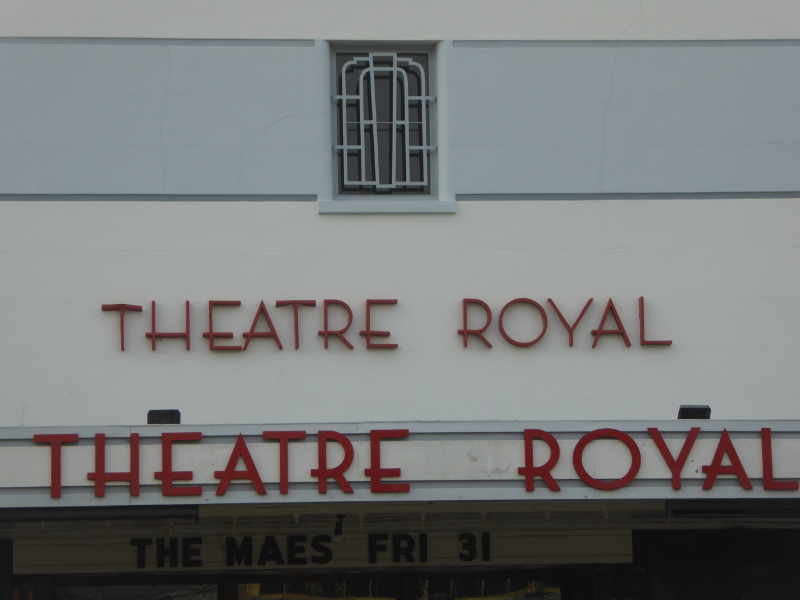
The Theatre Royal is actually one of the reasons we moved to Castlemaine in the first place since we can’t imagine life in a town that doesn’t have a cinema. That said, we don’t get to it as much as we’d like, in part because we are so busy visiting other parts of the State for Vintage Victoria, but also because the Theatre Royal today has almost as many music events as film screenings – at the weekend at least – and it is closed on Mondays, when we are actually free to go out!
We don’t begrudge them holding lots of concerts in this venue, though. The Theatre Royal existed long before moving pictures made the big screen so popular, so music and stage shows were traditionally what this vintage venue lived from in those goldrush days when it was first built.
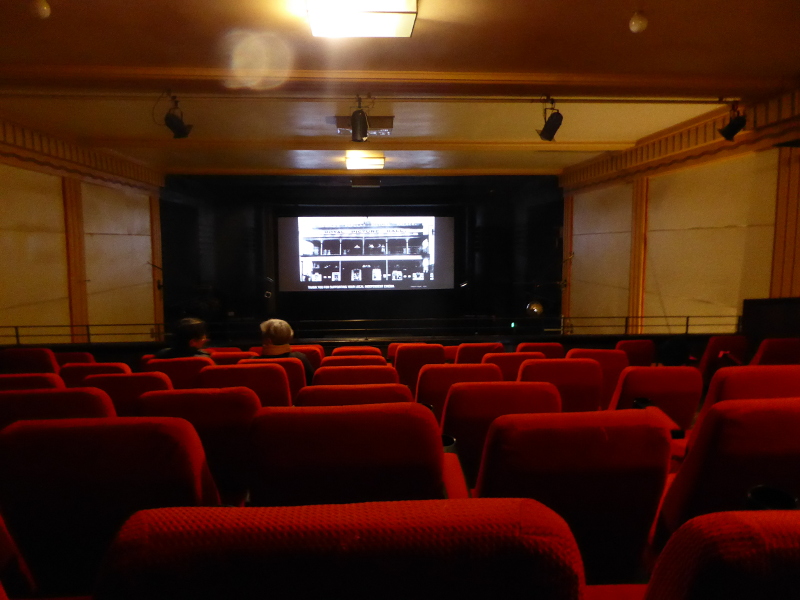
It was nice to see the photo of the old picture house on the screen as we came in for our film that afternoon. It had a slightly different name in those days, and the frontage looks rather different too from the modern-day cinema.
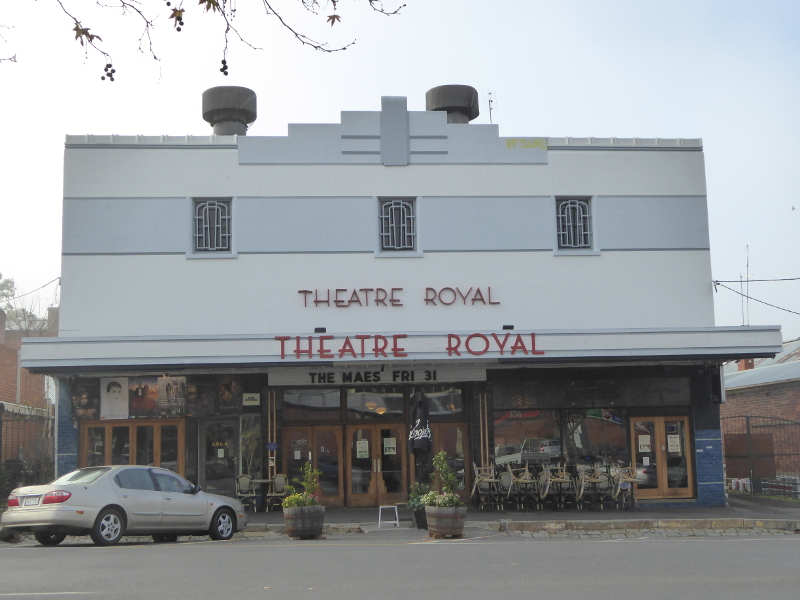
I’m not totally sure when the Theatre Royal was rebuilt and the current façade unveiled, but after our visit to the Rex in Charlton, which looked from the front remarkably like the Theatre Royal, I am guessing that Castlemaine’s vintage cinema building dates from around 1937 or 1938, and my search of the Trove database of press clippings hints at one of those two years too.
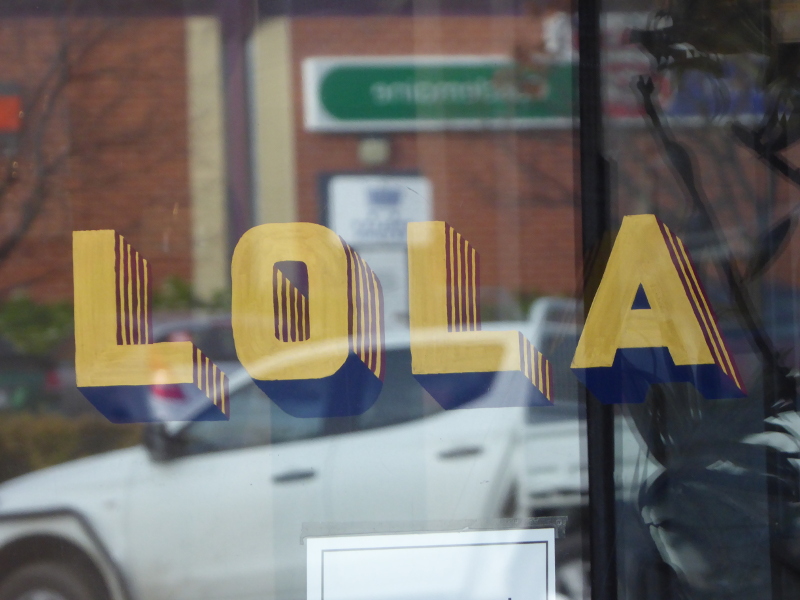
The posters of press clippings about Lola Montes were no longer on the cinema walls when we were there in July 2019, but we were told by members of staff that they are being reframed and hopefully will make a reappearance soon.
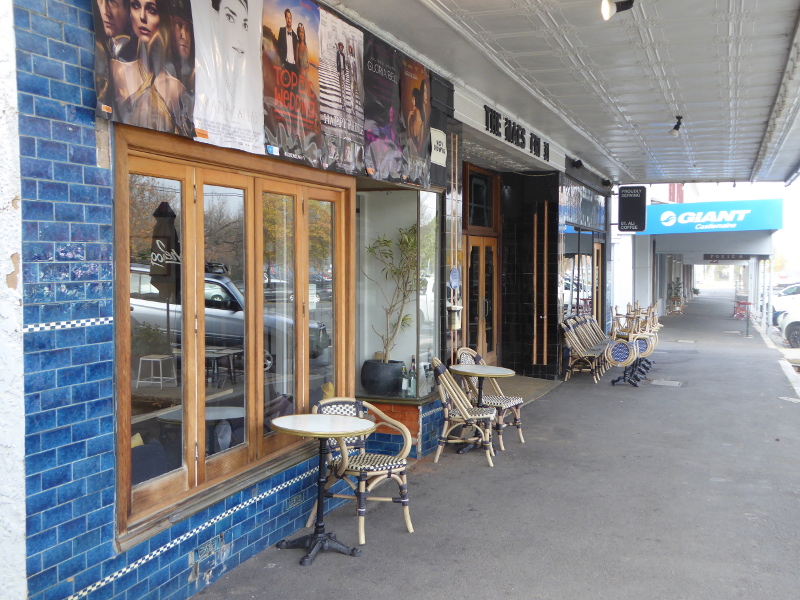
More on Lola in the history section below, but her name lives on in the cinema café and restaurant, which give the Theatre Royal a cosy feel on a wet winter’s afternoon.
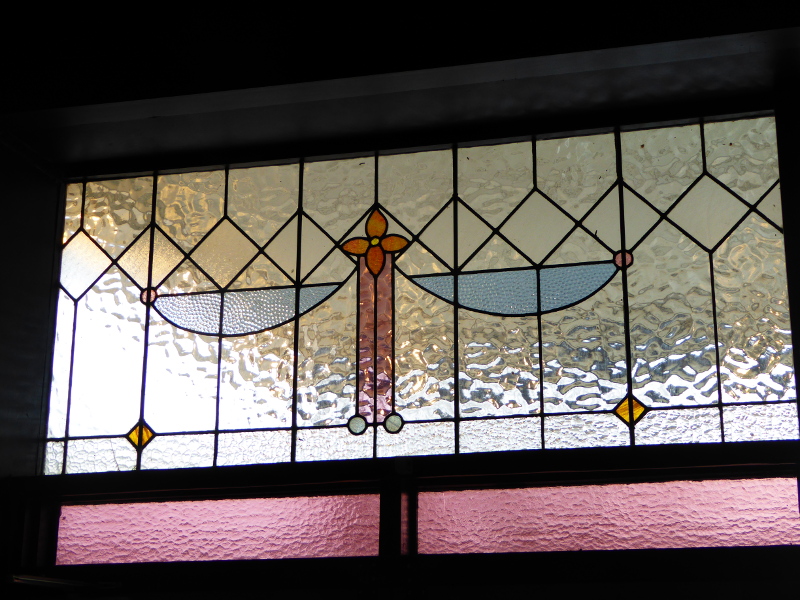
There probably aren’t many 1930s fittings left in the place these days, though the leadlight windows at the front are pretty vintage, and I like the art deco style line drawings that seem to be the Theatre Royal’s branding from before – visible on the façade and over the entrance.
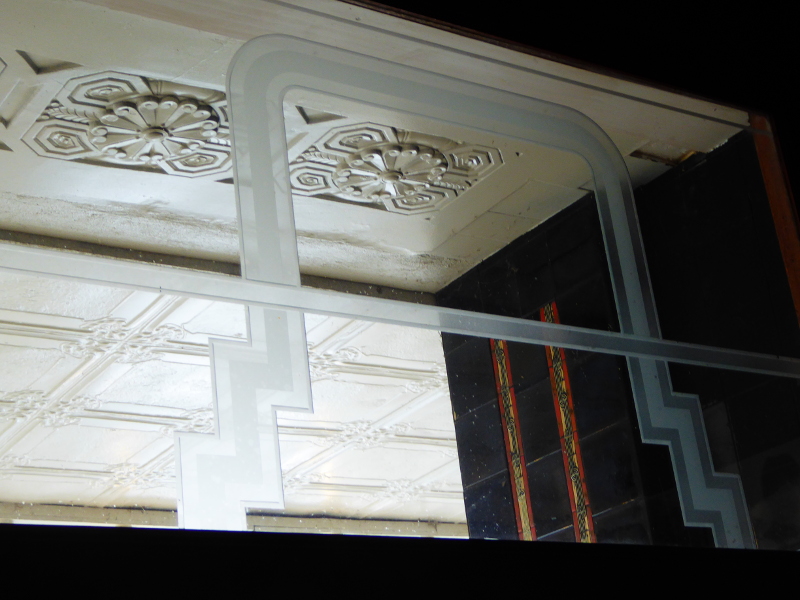
We found the same pattern in the old seating upstairs in the dress circle, where we watched the film this week.

There are no vintage lights (unless I missed something) in the main auditorium nowadays, but the hanging lamps in the entrance foyer added a vintage touch to the cinema, and they are repeated around the bar and coffee shop area.
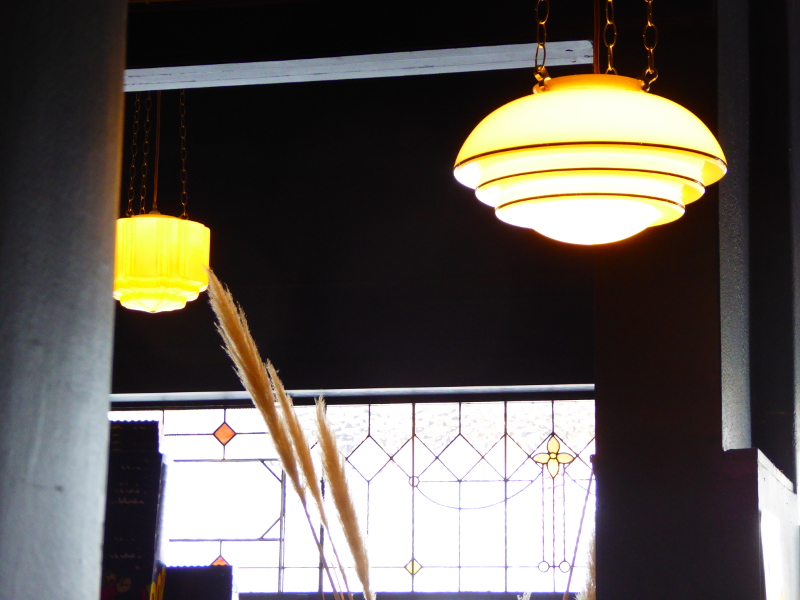
There’s a bit of vintage tiling outside the Theatre Royal, and lots of lovely film posters deck the walls inside and out.
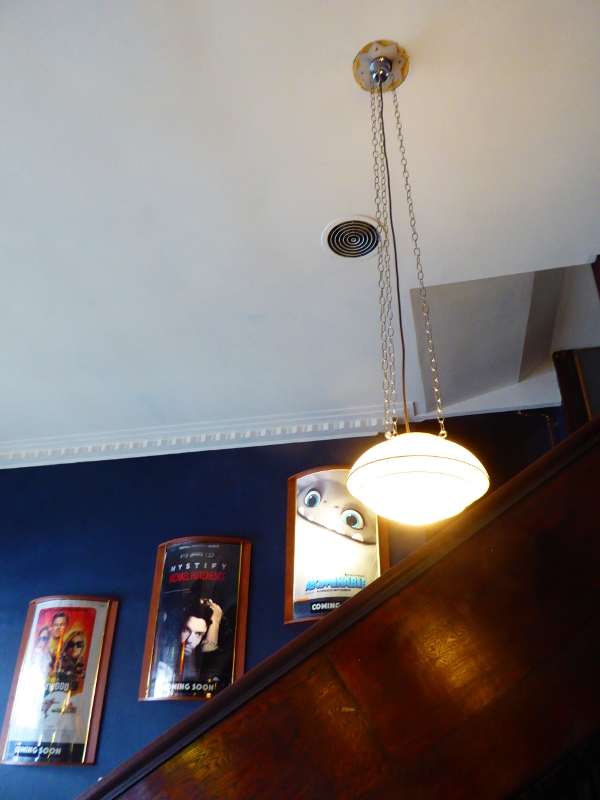
But it’s just great to have this hub of the community still going strong so long after the wild goldrush days when it first opened its doors.
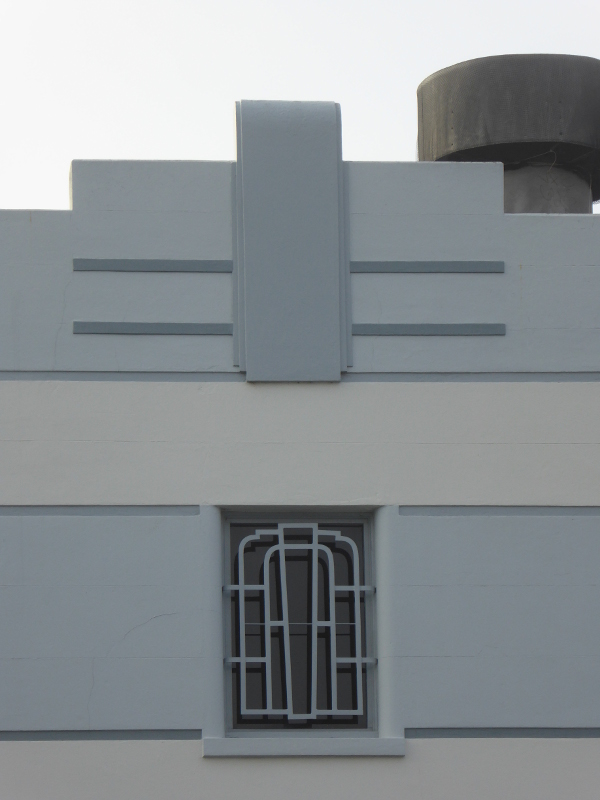
And the birds on the roof might just be auditioning for a re-run of the Hitchcock classic one night, maybe? Classic re-runs are actually one of my favourite things to attend at the Theatre Royal, and with Castlemaine making claims to be Australia’s hot rod capital, I can remember a wonderful evening here a couple of years ago when the film American Graffiti– perhaps my favourite coming-of-age movie ever – was shown during the Castlemaine Rod Run in April.

Practicalities
Theatre is closed on Mondays, and at weekends they often have gigs so check the schedule before setting off thinking you’ll just see whatever film they have on…
Ticket prices – basic is $16
History and stories about the Theatre Royal, Castlemaine
According to the Mount Alexander Mail of 16 February 1855, the Theatre Royal was the “first place of public amusement in Castlemaine” and popular with both residents and diggers in the area,
Posters up on the walls of the cinema today (well, soon to be put back anyway) talk of Lola Montes a star of the music hall stage from the 19th century, and she too came to the Theatre Royal in 1855, at the height of the goldrush. In fact Castlemaine was the first venue she performed at in Australia, such was the draw of the Goldfields in that period.
This Irish-born dancer took a Spanish name and had already wowed the King of Bavaria and gold diggers in California before landing in Castlemaine. Her debut here involved a telling of the tale of her Bavarian adventure, but within a week she had introduced the ‘spider dance’, which Melbourne’s Argus newspaper described as “utterly subversive of all ideas of public morality.” She went on to shock audiences in Bendigo, Ballarat and Geelong before returning to Europe and then ending her short life in America.
Lola Montes came first in a list of past performers at the Theatre Royal published by the Bendigo Advertiser in May 1918. This list included an extraordinary set of names, from the exotic (the Carandinis, Ilma de Murska, Madame Cora) to the banal (Barry Sullivan), as well as the distinguished (Sir William and Lady Don Thatcher – what on earth did they perform??), and the international (Lancashire bell ringers and Swiss yodellers).
There was a memorial service for Burke & Wills in 1861. Reported in the Bendigo Advertiser of 9 November that year, the event was held in the Theatre Royal 3 days earlier. But remember that the bodies had only been found a few weeks before that and that the expedition had passed through Castlemaine just a year earlier, so people would have had vivid memories of the camels, horses and wagons passing through town heading north. It’s interesting in the clipping to read how Burke is much more prominent than his companions, although in contemporary Australia, Burke & Wills are as joined as Benson & Hedges…
In 1883 the Salvation Army wanted to buy the Theatre Royal with the intention of turning it into a ‘barracks’, though I’m not sure how many guns they’d have been using if they had.
But it was in 1911 that a Mr J Ford took on the building and fitted it up for showing movies. The Mount Alexander Mail became a big fan of Mr Ford…The newspaper said in its editorial of 15 April 1911 that the Theatre Royal was now “as complete a Picture Theatre as can be found outside the metropolis.” They had Pathe’s latest projectors and the newspaper was excited to watch a film without any flickering, “which is the defect in most moving picture shows”. The picture house opened with two or three evening screenings a week and an ‘occasional matinee’.
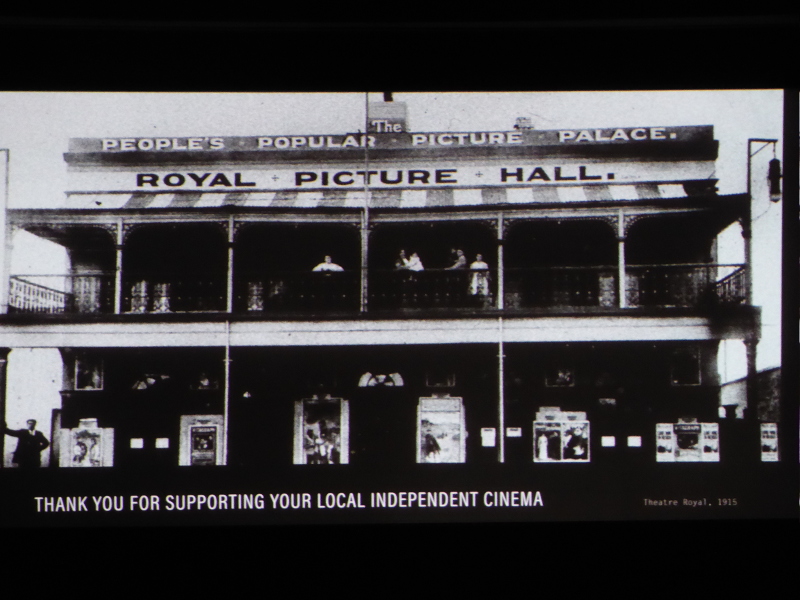
For a while the cinema was renamed the People’s Popular Picture Palace, though the auditorium itself seemed to be the Royal Hall. My search on Trove didn’t find many articles on the theatre, but I did enjoy the regular listing of films in the local paper, often billed as the ‘latest importations’. One programme from November 1917 included a ‘romance of the South African diamond fields’, called “A Kaffir’s Gratitude”. There was the Orpheus Orchestra providing a soundtrack, tickets were 1/- (about 7c today) in the dress circle, and 6d (less than 4c) downstairs, and patrons were recommended to arrive early ‘so as to secure a good seat’.
A 1928 news brief spoke of fire breaking out in the projection room causing damage valued at 800 pounds “Several women in the audience fainted, but there was no panic’”… But by the 20s and 30s the theatre was reportedly falling again into a state of disrepair and it underwent a complete rebuild, producing the façade we still see today.
A brief clipping from The Age of 1 October 1938 suggests that the new Theatre Royal was only officially re-opened that year, with a former MP for the town, Sir Harry Lawson, presiding over a gala performance to mark the reopening of the new building. That does seem a more likely vintage for the current Theatre Royal, which strongly resembles the Charlton Rex Theatre (itself opened in 1938), though it may have actually re-opened a year or so earlier as there was a court case in 1937 against the cinema owners for fiddling their tax return over the numbers of people who had been to see films there – the precursor to the ATO obviously had its spies in Castlemaine back in those days…
If anyone has the exact date of the newly refurbished Theatre Royal starting to show films again, I’d love to know. Also to know what they screened on the opening night?
But for more recent history and tales of the owners today and in recent years, along with some great ghost stories, take a look through some of the links to articles below…
Other links and writings on the Theatre Royal
This 2017 article on the ABC website has great ghost stories inside the theatre and an insight into how it survived into the modern era.
I’m not sure the dates in this Heritage Vic website entry are accurate, as Lola Montes was here before 1858 and there were films on show here before the 1930s…
This entry on the Heritage Council website is more precise on dates – the original building where Lola Montes performed burnt down in 1857; there’s some nice info and more stats on seating capacity of the various cinemas here over the years.
This entry on the CAARP website talks of an 1874 fire but has nothing on a fire in 1857…
The Bendigo Advertiser has this interesting piece on a 2014 sale of the building (ie before the current owners got involved) and has yet more fire dates – 1857 reappears but also 1887.
And finally another blogger has written about a Vintage Victoria venue. Michelle Scott Tucker is a key player in the annual Stella Prize for women’s writing.
People connected to the Theatre Royal
One of the Pankhurst sisters spoke at the Theatre Royal in May 1917.
Adela Pankhurst is probably the least well-known of this English suffragette family, but she came to live in Victoria after spending time in prison in Scotland, and became politically active here (though not as a suffragette, since women already had the vote in Australia).
Miss Pankhurst was in town for an election hustings, which often used to be held in big cinemas around the country. There’s no report of the debate itself but the two candidates the speakers were backing both seemed to be Labor men, though with very different views on the War.
Adela Pankhurst was a vociferous opponent of Australia being involved in World War 1, and she ended up later that year in prison over here too.
By September 1917, this had split the community, with the local Labor Council in Castlemaine supporting Miss Pankhurst, and wanting to organise a fund-raising film screening at the Theatre Royal.
The owner of the cinema at the time Mr Ford, who had introduced the big screen to Castlemaine, had probably heard Adela speak in his building when she came to town in May, and probably didn’t like what he heard. That’s a guess on my part, mind. He may merely have thought that bringing politics into a film screening was not good for business, so he wanted it to be announced that the film screening was a fund-raiser for Miss Pankhurst (and he thought this might lower attendances). But the Labor Council didn’t want to comply with his ‘dictatorial whims’, and the screening was cancelled in the end.
Adela Pankhurst apparently later joined some far right outfit called Australia First, which made me wonder what relations were like between her and Emmeline or her sister Christabel. Now wouldn’t it be fantastic to have access to their inter-continental correspondence?
Still, it’s good to know that Castlemaine has always had its finger on the pulse of world affairs – something that continues into 2019 with the school-going climate campaigners!
What are your memories of the Theatre Royal?
Is there anybody still around today who can remember the opening of the new Theatre Royal in 1937 or 1938? Unlikely, I guess, but how about a memory of an early first date in the 1950s or 60s?
What’s your favourite thing about the Theatre Royal? What’s the best film you’ve seen there or was it a musical or political event you attended that sticks with you as a great memory?
Did anybody’s grandparents ever talk about Adela Pankhurst?
And can anyone enlighten me on the exact date the rebuilt Theatre Royal opened in the 1930s, or help with the opening programme?
Coffee or tea before the pic or after?
The Lola Café serve up St Ali coffee, which is always a good brew. I’m rather fond of their chai latte, personally, and they do a good loose leaf tea too. Tuesday evenings sees special pizza and film specials, and you can take your pizza in with you for the film – how decadent is that?


Thanks so much for this article I’ve only come across the electronic version today but My Grandfather G Ford keeps this printout and shows me and my family regularly when teaching us about our family history! Mr John Edward Ford was my Great Great Grandfather and owned the theatre prior to the First World War starting!
What is the theater shown at 20:54, episode 1, of the mini-series “Catching Milat”? I find it hard to believe there is another theater with the same facade called”The Royal”.
The Theatre Royal in Castlemaine is the oldest continuous operating theatre in mainland Australia. Only another Theatre Royal, that being in Hobart, beats it for the record of the oldest and longest surviving theatre in all of Australia. There must be something in the name of TR to ensure longevity and success.
Mr. J Ford was my grandfather. So lovely to see the theatre still going, too many historic buildings have been lost to ” progress”. Carole (ford) lowther